Winning Arguments
From Aristotle to Obama
Everything You Need to Know About
the Art of Persuasion
Jay Heinrichs
PENGUIN BOOKS
PENGUIN BOOKS
Published by the Penguin Group
Penguin Books Ltd, 80 Strand, London WC2R 0RL , England
Penguin Group (USA) Inc., 375 Hudson Street, New York, New York 10014, USA
Penguin Group (Canada), 90 Eglinton Avenue East, Suite 700, Toronto, Ontario, Canada M4P 2Y3
(a division of Pearson Penguin Canada Inc.)
Penguin Ireland, 25 St Stephens Green, Dublin 2, Ireland (a division of Penguin Books Ltd)
Penguin Group (Australia), 250 Camberwell Road, Camberwell, Victoria 3124, Australia
(a division of Pearson Australia Group Pty Ltd)
Penguin Books India Pvt Ltd, 11 Community Centre, Panchsheel Park, New Delhi 110 017, India
Penguin Group (NZ), 67 Apollo Drive, Rosedale, North Shore 0632, New Zealand
(a division of Pearson New Zealand Ltd)
Penguin Books (South Africa) (Pty) Ltd, 24 Sturdee Avenue, Rosebank,
Johannesburg 2196, South Africa
Penguin Books Ltd, Registered Offices: 80 Strand, London WC2R 0RL , England
www.penguin.com
First published in the USA by Three Rivers Press 2007
First published in Great Britain by Allen Lane as Thank You for Arguing 2008
This revised edition published by Penguin as Winning Arguments 2010
Copyright Jay Heinrichs, 2007, 2010
All rights reserved
The moral right of the author has been asserted
Except in the United States of America, this book is sold subject to the condition that it shall not, by way of trade or otherwise, be lent, re-sold, hired out, or otherwise circulated without the publishers prior consent in any form of binding or cover other than that in which it is published and without a similar condition including this condition being imposed on the subsequent purchaser
ISBN: 978-0-14-196438-6
PENGUIN BOOKS
WINNING ARGUMENTS
Jay Heinrichs has written for dozens of publications, including The New York Times Magazine, Outside, Readers Digest, and Country Living. He has won numerous journalism awards. Heinrichs has taught rhetorical journalism to college and university editors at Ivy League universities, has lectured widely on the subject, and has hosted a rhetoric symposium at Dartmouth College. His acclaimed blog is www.figarospeech.com.
To Dorothy Junior and George:
You win.
PREFACE
F ew people can say that John Quincy Adams changed their lives. Those who can are wise to keep it to themselves. Friends tellme I should also avoid writing about my passion for rhetoric, the three-thousand-year-old art of persuasion.
John Quincy Adams changed my life by introducing me to rhetoric.
Sorry.
Years ago, I was wandering through Dartmouth Colleges library for no particular reason, flipping through books at random,and in a dim corner of the stacks I found a large section on rhetoric, the art of persuasion. A dusty, maroon-red volume attributedto Adams sat at eye level. I flipped it open and felt like an indoor Coronado. Here lay treasure.
The volume contained a set of rhetorical lectures that Adams taught to undergraduates at Harvard College from 1805 to 1809,when he was a United States senator commuting between Massachusetts and Washington. In his first class, the paunchy, baldingthirty-eight-year-old urged his goggling adolescents to catch from the relics of ancient oratory those unresisted powers,which mould the mind of man to the will of the speaker, and yield the guidance of the nation to the dominion of the voice.To me that sounded more like hypnosis than politics, which was sort of cool in a Manchurian Candidate way.
In the years since, while reading all I could of rhetoric, I came to realize something: Adamss language sounded antique,but the powers he described are real. Rhetoric means more than grand oratory, more than using words to influence or persuade,as Websters defines it. It teaches us to argue without anger. And it offers a chance to tap into a source of social powerI never knew existed.
You could say that rhetoric talked me into itself.
Concordia discors
Harmony in discord
HORACE
INTRODUCTION
1. Open Your Eyes
THE INVISIBLE ARGUMENT
A personal tale of unresisted persuasion
Truth springs from argument among friends.
DAVID HUME
I t is early in the morning and my seventeen-year-old son eats breakfast, giving me a narrow window to use our sole bathroom. I wrap a towel around my waist and approach the sink, avoiding the grim sight in the mirror; as a writer, I dont have to shave every day. (Marketers despairingly call a consumer like me a low self-monitor.) I do have my standards, though, and hygiene is one. I grab toothbrush and toothpaste. The tube is empty. The nearest replacement sits on a shelf in our freezing basement, and Im not dressed for the part.
George! I yell. Who used all the toothpaste?
A sarcastic voice answers from the other side of the door. Thats not the point, is it, Dad? George says. The point is how were going to keep this from happening again.
He has me. I have told him countless times how the most productive arguments use the future tense, the language of choices and decisions.
Youre right, I say. You win. Now will you please get me some toothpaste?
Sure. George retrieves a tube, happy that he beat his father at an argument.
TRY THIS IN A MEETING
Answer someone who expresses doubt over your idea with Okay, lets tweak it. Now focus the argument on revising your idea as if the group had already accepted it. This move is a form of concessionrhetorical jujitsu that uses your opponents moves to your advantage.
Or did he? Who got what he wanted? In reality, by conceding his point, I persuaded him. If I simply said, Dont be a jerk and get me some toothpaste, George might stand there arguing. Instead I made him feel triumphant, triumph made him benevolent, and that got me exactly what I wanted. I achieved the height of persuasion: not just an agreement, but one that gets an audiencea teenaged one at thatto do my bidding.
No, George, I win.
The Matrix, Only Cooler
What kind of father manipulates his own son? Oh, lets not call it manipulation. Call it instruction. Any parent should consider rhetoric, the art of argument, one of the essential Rs. Rhetoric is the art of influence, friendship, and eloquence, of ready wit and irrefutable logic. And it harnesses the most powerful of social forces, argument.
 Useful Figure
Useful Figure
The (Greek for alternative judgment) reframes an argument by redefining it. Not manipulationinstruction. Youll find a whole chapter on figures later on, as well as a glossary in the back.
Whether you sense it or not, argument surrounds you. It plays with your emotions, changes your attitude, talks you into a decision, and goads you to buy things. Argument lies behind political labeling, advertising, jargon, voices, gestures, and guilt trips; it forms a real-life Matrix, the supreme software that drives our social lives. And rhetoric serves as arguments decoder. By teaching the tricks we use to persuade one another, the art of persuasion reveals the Matrix in all its manipulative glory.

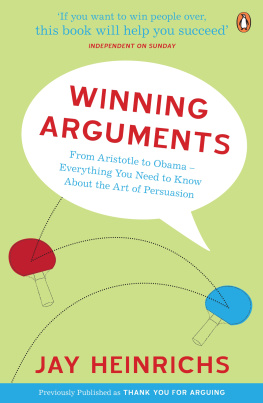
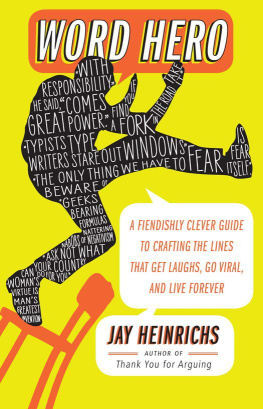

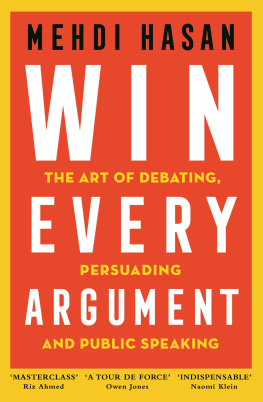

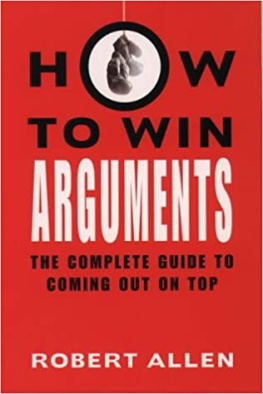

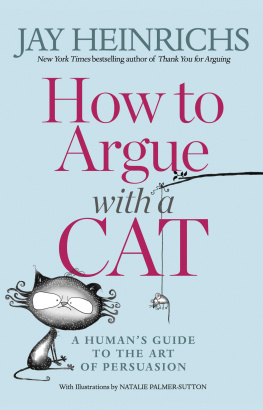
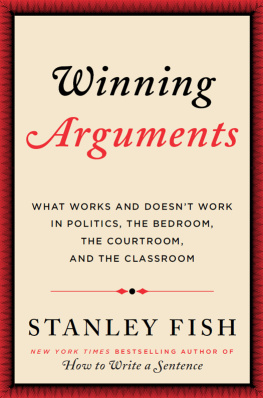

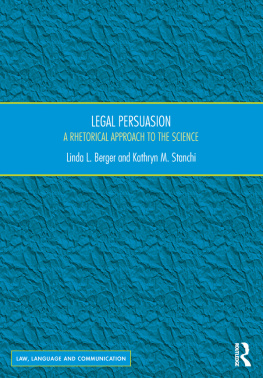
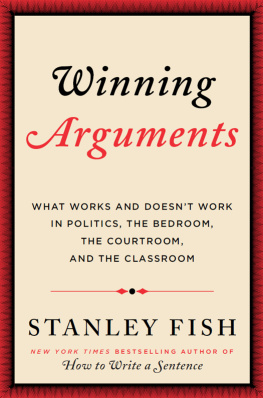
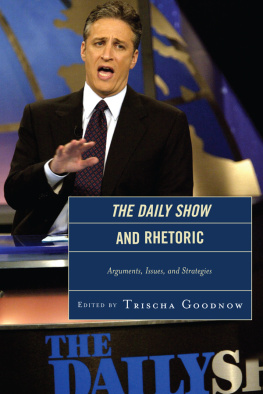


 Useful Figure
Useful Figure